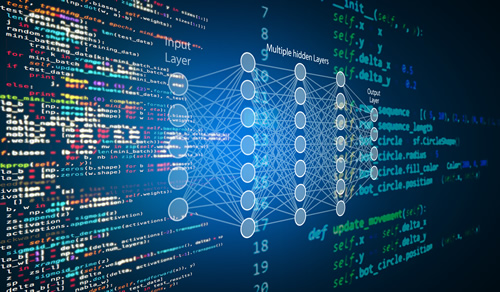Students exposed to coding and programming at an early age are well equipped to take on higher-level computer science courses in high school—and they also build essential skills for future opportunities in the technology world.
When Rob van Nood was hired as the educational technology specialist for Catlin Gabel School in Oregon, coding and computer science courses were only offered in grades 9-12, and not to students in the younger grades.
Related content: 5 examples of coding and robotics in the classroom
This lack of coding education in earlier grades left a significant teaching gap in 21st century skills such as problem solving, designing, and computational thinking.
In a recent edWebinar, van Nood explained that it is his mission to mentor and facilitate computer science learning in a manner that integrates coding in every aspect of his students’ education.
Engaging students with coding and computer science must extend past the walls of the computer science lab. Hence, while it is great to see students on the ground, learning from coding tutorials and programming robots, students must be able to make a connection between coding and the physical world.
“I didn’t feel great that I spent all this time building these relationships with kids and getting them to understand a little bit about coding. Then, after those days, they didn’t have any other use for the technology or use for coding outside of robotics that they might do at a camp,” said van Nood.
Integrating coding and programming into K-8 core curricula takes a special relationship and commitment between classroom teachers and instructional technology specialists.
When applied properly, coding and programming can have a positive impact on core curricula. van Nood sees not only more engagement of students but examples of problem-solving skills like conditional thinking and trial and error that are enriching classroom instructions.
Middle school science projects such as the environmental aspects of sustainability and the Copernican Revolution are great opportunities for students to use products such as mBots and SAM Lab tools to apply to their learning. The familiar Goldilocks story becomes a project when students are the designers and prototype builders of the perfect “tea” temperature using tools such as SAM Labs, Microbits, Vernier probes, and LEGOs.
Science courses are not the only way to connect students to coding. Middle school social studies curricula on Feudal Asia/Medieval Europe and the Hillary Steps are perfect avenues for incorporating STEM tools. When students develop, analyze, and interpret data and artifacts, they are challenged to explain their thoughts in writing as well as show their ideas in strong metaphorically visual models.
van Nood emphasizes that students need to be creators of their learning. It is critical to establish best practices for engaging students with data collection technology.
Recognizing that girls are excellent coders, both curriculum leaders and classroom teachers must develop inclusion strategies to overcome the prevalent gender stereotypes of coding and robotics.
About the presenter
For the past 22 years, Rob van Nood has been passionate about creating spaces and experiences where kids can explore and pursue their passions. Rob has taught in public, charter, and independent schools and has worked with students from PreK to 12th grade. Currently, as Catlin Gabel School’s Educational Technology Specialist, he supports teachers, administrators, and students to integrate technology, making, and tinkering into their learning experiences. Part of Rob’s responsibilities is to also find creative ways to bring the world of coding into the lives of students through integrated projects. As the co-founder and lead educational designer at Tinker Camp, he runs tinkering and maker workshops for educators across the Portland, OR, and Vancouver, WA, metro areas.
Join the community
STEM Learning: Full STEAM Ahead is a free professional learning community on edWeb.net that provides educators, curriculum leaders, and industry members with a place to collaborate on bringing more science, technology, engineering, and mathematics into the classroom.
This edWeb broadcast was sponsored by Vernier Software & Technology. The recording of the edWebinar can be viewed by anyone here.
- 4 ways to encourage play in education - April 25, 2024
- CoSN IT Leader Spotlight: Lisa Higgins - April 25, 2024
- It’s time to pay student teachers - April 25, 2024


